The transcript from this week’s MiB: Morgan Housel on The Art of Spending Money, is below.
You can stream and download our full conversation, including any podcast extras, on Apple Podcasts, Spotify, YouTube, and Bloomberg. All of our earlier podcasts on your favorite pod hosts can be found here.
~~~
This is Masters in business with Barry Ritholtz on Bloomberg Radio
Barry Ritholtz: On the latest Masters in Business podcast. My conversation with Morgan Housel, I’ve known Morgan for, I don’t know, 15 years, and I’ve loved all of his writing and his books. “The Psychology of Money” is, is one of the best, best sellers in all of personal finance coming up on 10 million copy sold amazing, same as ever. Timeless stories about human nature. The new book, “The Art of Spending Money, simple Choices for a Richer Life,” drops today. I thought this conversation is one of our best. Morgan is a deeply thoughtful person. Everything he says comes from both experience and academics. I, I love the way he puts stories together with lessons. I thought the conversation was fascinating, and I think you will also, with no further ado, my conversation with author Morgan Haosel.
For people who may not be familiar with you and your career, let’s give them a little bit of background. You go to University of Southern California where you get a BA in economics. What was the career plan?
Morgan Housel: The plan all along was to be an investment banker or a hedge fund manager. The reason why is every or very many young, ambitious young, 20 something males, particularly in the mid two thousands, that was the thing to do. If you go back to the early mid two thousands, tech really wasn’t that much of a thing yet. Of course it was around, but it didn’t have the money, the prestige, the growth that did,
Barry Ritholtz: Especially after the crash in 2000, after the Crash. Finance was the thing, huh?
Morgan Housel: If you were young and ambitious and wanted to make a lot of money, you went to Wall Street, you worked at Goldman Sachs, your investment banker. That’s what I wanted to do. Plan A, B, and C. Didn’t want anything to do.
I got an investment banking internship in what would’ve been, I guess, my junior year, and it was like, this is it. This is the dream. Here we go. This is awesome. Within 10 minutes of the first day, I knew it was not for me. 10 minutes. It took 10 minutes for me to be like, Nope, nope, that’s not gonna work. I’m, [that’s hilarious]. I can do good work, but not under the hazing style pressure that was so prevalent in banks back then. And it’s not that I didn’t have the work ethic for it, it was just, it seemed like such a broken culture that I wanted nothing to do with.
Barry Ritholtz: It’s so funny you said that! I had the same experience as a first year associate and a summer associate in a law firm, and I’m like, oh, this is a horrible lifestyle. You are in your twenties. Why do I want to be spending every weekend in the law library? It was miserable.
Morgan Housel: They had a quote on the first day of my investment banking internship, and they said, “The rule here is if you don’t come to work on Saturday, don’t bother coming back on Sunday. And I went, Nope, nope. That’s not for me. That’s not for me.
Barry Ritholtz: That’s Great. I, so I don’t have to work weekends. Fantastic. See you Monday. Right.
Morgan Housel: So then I, so then I didn’t know what to do, and I was really adrift and, and and lost. And then I graduated in 2008. Financial crisis world is in flames. Nobody is hiring. And I stumbled haphazardly — not by any plan or strategy — out of desperation. I took a job as a finance writer at the Motley Fool.
Barry Ritholtz: Were you an analyst or a finance writer?
Morgan Housel: I was a writer from day one. I was still in college at the time and started covering banking stocks at the Motley Fool in 2007. And good timing. And I’ve, I’ve been a writer ever since.
Barry Ritholtz: So I’m curious, talking about being a hedge fund manager or an investment banker. I know your early life, you were both a ski bum and a car valet. [Yeah]. Parking really expensive cars. Did that have any influence on your initial erroneous career choice?
Morgan Housel: It had so much influence because [really?!]
I grew up in a middle class family, great town, but not, not a wealthy town. Not, not, not poor, not out in the sticks, but a decidedly middle class town in California.
Barry Ritholtz: Where was this?
Morgan Housel: Just outside of Lake Tahoe, California. Also before Tech Money infiltrated Lake Tahoe. Right. So back then it was truly just a small little mountain town. It’s not anymore. ’cause tech money came up. Right? But, and so I didn’t have much concept of wealth because in the town that I grew up in, regular people had old pickup trucks and rich people had new pickup trucks. That was the stratification of wealth, right? That was as far as it got.
And so, but anyway, I started working at this, these fancy hotels, and all of a sudden people were come, starting to come in, in these cars that just blew my mind. Not just BMWs and Mercedes, but Ferrari, Lamborghinis once in a while. And then I went to college in Los Angeles, stayed working as a valet at even nicer hotels in LA and then it was Rolls Royces and Aston Martins. And it was just a level of wealth that I didn’t know existed.
And in my young, you know, 19, 20-year-old mind, it was just so appealing to me. I was just overwhelmed with like, whatever that is, I want it, I want some of that immediately.
And, but it was also, I, I think I, not, not on on purpose, but I think I just kind of started picking up the little subtle clues of the psychology of rich people. The first thing that was, I was very apparent was that a lot of them were not that happy. A lot of them were just kind of old, bitter, broken men arguing with their wives
Barry Ritholtz: Second wives third wives?
Morgan Housel: Right, right, right. Always, always stressed, always barking on the phone. And it was, and it was all the time. It was all the time. And I remember picking up on that and being like, Hey, on one hand, I really want that. On the other hand, like, is that supposed to be my role model? Because it doesn’t look that great. And I know a lot of middle class people from the town I grew up in who seem a hell of a lot happier than that guy.
And so I think that was, I started picking up on kind of the psychology of wealth, not intentionally, but it was a very good window into that aspect of wealth because in my little pea size, 19-year-old brain, it was in my, what I assumed was, you have so much money, you must just be a walking ball of happiness. That was, that was the intuition that I had, but it was so clearly not that.
Barry Ritholtz: So think about that for a second. I have so much stuff from your new book to that’s relevant to this, but we’ll get to that later. Think about when you’re young and relatively broke — and I grew up lower middle class and put myself through college and grad school — and always felt like, gee, if only I didn’t have to worry about money, how much greater my life would be> But chasing away the lack of money blues, that’s just a modest decrease in stress. [Yeah]. Not the secret to happiness.
Morgan Housel: I think what is tends to be true, and there’s no hard and fast rules here. This is not black and white, but it tends to be true that wealthier people might have fewer bad days than poor people. I don’t know if they necessarily have more good days.
Barry Ritholtz: That’s a great way to frame it.
Morgan Housel: Now, that is a lifestyle improvement. To have fewer bad days, to not have to worry and stress about making rent and healthcare and whatnot to remove that is a lifestyle improvement. But it is not happiness. It is different in the same way that you and I are fortunate enough to wake up every morning not worrying about catching polio. That’s a lifestyle improvement
Barry Ritholtz: Or what you can eat that day or, willyou eat that day
Morgan Housel: Exactly. And relative to the standards of a hundred years ago, that is an unbelievable lifestyle improvement, but it’s not happiness because you and I didn’t wake up this morning thinking about it.
Barry Ritholtz: That is simply Maslow’s hierarchy of basic needs. That’s different than happiness, than contentment, which we’ll talk about.
So let’s stay with your writing at the Motley Fool. One of the things, two of the things that really distinguish your writing, first, you are a great storyteller and you find some fascinating stories. But second, you figured out early that finance is not so much about math as it is about behavior. Yeah. Tell us how you stumbled into an interest in behavioral finance.
Morgan Housel: So much of this was Motley Fool’s a stock picking organization. And I’m not, I don’t look down upon stock picking, but it’s not what I do. It’s not how I invest, it’s not what interests me at all. And so I kind of had to find a little niche for myself at the Motley Fool. They were completely, and and they were completely supportive of my, kind of black sheepedness being there, being like, Hey, you know, everyone else is picking stocks and I’m just trying to do something else over here.
Barry Ritholtz: You were counter programming
Morgan Housel: Right? And so I had to figure out what to do For a while. It was macro. This was post, post-financial crisis. And I was like, I’m gonna study the forces of the economy. And that, not intentionally, but kind of just pushed into behavior and psychology. I think a lot of that was, as I was studying macro, this realization — and you’ve been a big part of this as well — of realizing that there is nothing in a macro textbook that will explain 2008. And so as a writer, as I was trying to explain what just happened in the aftermath of the GFC, it was, there’s nothing in there that explained why people did what they did.
Nothing in an economics textbook or, or the academic framework that would explain the housing bubble that preceded it, the behavior during the crash, the pessimism after it, like, not much there, but if you looked at it through the lens of psychology or sociology or political science or evolution, all these other fields like had a lot to say and, and could explain why people were doing the things they do. So that was just the subtle coming to terms with the idea that money and finance is not the study, it’s not the study of finance. It’s a study of how people behave with money.
Barry Ritholtz: I’m pulling forward a quote from later in our conversation that’s dead on with that insight “Risk has two stages. First one, it actually hits then when the scars influence our subsequent decisions.” [Yeah]
You graduate into the 08, 09 disaster. Everybody post financial crisis — and I shouldn’t say everybody — but so many people post financial crisis was, “Hey, that was just the first leg after March 09. Wait, wait for the second leg”
Morgan Housel: The phrase, double dip recession. Everybody said it 14 times a day.
Barry Ritholtz: 82 was decades before; PTSD
Morgan Housel: If you go back to 2010, particularly 2011, everybody in the financial media said the phrase “Double dip recession “every hour. It was inevitable. It was s absolutely inevitable state.
The other version of this is at the end of World War II, 1945, it was a foregone conclusion that nobody disagreed with, that the US economy would fall right back into the Great Depression. That, that in the absence of military spending, it was not just going to contract and revert to the mean, it was gonna go back to the 1932 lows of desperation.
And in hindsight, it didn’t happen. But it was a foregone conclusion back then.
It is always the case that the simple narrative, and oftentimes the simple narrative is just extrapolating whatever just happened is gonna be the most appealing, the most logical, what makes the most sense. In the cyclical nature of economies, though, like you, we, we all know in hindsight what happened during those period that actually the end of World War ii, there were some mild recessions in the late forties and fifties, but by and large, that was actually the beginning of an epic boom.
Barry Ritholtz: Absolutely.
Morgan Housel: In the fifties and sixties, after the GFC, you know, 2009, 2010, that was in the stock market and economically the beginning of a boom. And it’s, it’s almost impossible to realize that in real time, as it was almost impossible to realize in ’99, 2000, that of course in tech stocks, but also in the broader economy, that was about as good as it gets, and when it’s about as good as it gets, it was so easy to extrapolate from there, but that was actually the end of the good days.
Barry Ritholtz: You know, the shocking thing about the post financial crisis period, and I, I’ll take a little credit for floating this phrase out there, it was the most hated bull market in history. Yeah. By like October oh nine, people were talking about wait for the next 30, 40% dip. And you mentioned hindsight, our hindsight bias keeps us looking backwards and ignoring the fact that, hey, when is a down 50% market in the US not a great entry point. All right. 1929. But that is the exception to the rule. Yeah. Every other time it’s been down cut in half, I’m a buyer.
Morgan Housel: Right. And actually, if you go back to, you know, 19 31, 32, when the market was down 50%, it eventually fell 89%. So if it was down 50%, you still lost a fortune after that. [That’s right]. But if you made those purchases down 50% and held them 10 years later, you were doing an absolutely incredible. Now that was, that’s cold comfort for the, the other 50% that you continue to lose by 1932. But there’s all these cases where people say they’re long-term investors and they wanna be long-term investors, but then particularly when they’re trying to buy the dip, if the market falls for another 90 days after that, right. They feel like they’ve made a colossal error.
Barry Ritholtz: o I find there’s a huge difference. Many people are intellectually long-term investors, but emotionally they’re not. And that tension is what drives a lot of that.
Morgan Housel: See, I would put a different spin on that. Go ahead. I would say a lot of people, you know, claim to be kind of short term investors in the sense that on Twitter they’re like, this is the peak, this is the top, the economy in Q4 is not looking. They say things like that, but if you actually looked how they invest, like, and their, they’re they dollar cost average into their 401Ks and never sell anything.
Barry Ritholtz: And that’s the right approach, that’s the right approach in market crash. In fact, you never pick a point as the bottom. Even if you put a big chunk of your free capital, you, you should always be, Hey, I don’t know where the bottom is. I’ll try a little in, in 1930 and a little more throughout 31 and 32. Yeah, eventually your average is gonna be far lower with than where the market is, but you have to have a steady source of capital and And some income.
Morgan Housel: I remember, I in 2011 when there was the double dip recession and the market did fall, I don’t know, 20 or 30%, and that was probably more pessimistic in 2011 than people were in 2009, 2011, people were like, this is it. This is We’re going back down to the list. And The market was plunging. And the narrative was, everyone’s panicking, everyone’s selling. Vanguard put out a study that showed during that era, 99% of their clients did nothing, didn’t sell, didn’t panic, didn’t do any, didn’t do anything. And so the narrative of everyone’s panic, everyone’s selling, is usually so completely different from what people are actually doing.
Barry Ritholtz: Let me share one of my favorite quotes of yours since you’re, you’re talking about highs and lows. Every market valuation is a number from today multiplied by a story about tomorrow. I I think that’s genius. I love that quote.
Morgan Housel: Thank you. You know, it’s always, you know, a number from today, like earnings per share multiplied by a story about tomorrow, like a valuation multiple. And what’s important is, particularly in a low interest rate environment, and particularly in a, in a ZIRP environment, those stories are everything. The number from today almost doesn’t matter. The stories are everything. That’s always been the case. But in a social media world, the stories get bonkers. The stories get absolutely nuts.
Barry Ritholtz: Narratives become memes.
Morgan Housel: You know, Ben Graham had the quote in the, the, the stock market is a voting machine. Maybe it was Keynes voting machine in the short term and a weighing machine in, in, in the long run. But he said that a hundred years ago, and it’s still true. But there, because of how the world works today, stocks can remain voted on, not necessarily weighed for probably decades. Tesla has been a voted upon stock, not a weighed upon stock for its entire existence. And maybe that will change someday. But I think in previous eras in the Ben Graham era, or even not even, you know, 20 or 30 years ago, you could have brief momentary flashes of insanity. And that was probably the, the late nineties. You had, 18 months of just pure insanity where everything was narrative driven. It it wasn’t really earnings driven. And now you can have that going on for very long periods of time. I mean, how long has, has Hertz and Game Stop been been meme stocks like years five, five
Barry Ritholtz: Still a Reddit still a thing.
Morgan Housel: It’s still, it’s still a thing. Maybe not to the extent that it was, but these stocks did not revert all the way back. They still have this cult meme following. And so the, the point being, it’s always a number from today multiplied by a story about tomorrow. It’s, but ’cause the world we live in, interest rates and social media, the stories get insane.
Barry Ritholtz: Let Me mix your Kane’s quote with your own quote. In the short run, markets are probability machines in the long run, they’re narrative machines that that’s a good blend of you and Kanes. There are worse I people to, to, to marry.
One or two more questions in this segment before we move on. I’m, you, you address one of my favorite pet peeves about uncertainty in a, in a sentence that I love, quote, “There’s rarely more or less economic uncertainty just changes in how ignorant people are to potential risks.” [Yeah]. That, that sums it up per perfectly. I hate the uncertainty meme. ’cause by definition the future is always inherently uncertain.
Barry Ritholtz: Yeah. I mean there have been some academics who have tried to make uncertainty indexes where they make it, and you can put it on a chart to measure the amount of uncertainty. And there’s various ways that they do it in terms of like newspaper narratives and changes in, in economic policy and to, to map out uncertainty. And what’s so fascinating to me is if you look at these indexes, which I think are pretty rationally put together, it shows that uncertainty is the lowest, as in certainty was the highest at two periods in, in modern times, I guess three periods. One is right before nine 11, the other is right before the GFC and the other is right before COVID. That was when purportedly we understood the future in the greatest degree, which,
Barry Ritholtz: And if you go back in time, which is completely insane, I’m gonna tell you there was a lot of certainty in late 99. Yeah. Stocks grow to the sky and you go back to March oh nine, there was certainty that stocks were going to zero.
Morgan Housel: And so what we know in hindsight is that those three periods just before nine 11, just before 2008 and just before COVID were the most uncertain. That was when your view of the, the future was completely and utterly wrong no matter who you were or how smart you were. And so IIII think it’s true that there is never more or less uncertainty. It’s just we go through periods where we are more ignorant and more confident in our ability to forecast than others.
Barry Ritholtz: Let’s talk about luck. I just wrote something about this and found a quote of yours afterwards that I would’ve loved to use. “Most people, when they talk about luck, increasing the surface area of your luck, luck is where preparation meets opportunity” [hate it]. Your definition of luck recognizes that it’s something fundamentally outside of your control. [Yes]. “You can’t believe in risk without also believing in luck. ’cause they’re fundamentally the same thing and acknowledgement that so much is outside of your control.” [Yeah].
Morgan Housel: When people say like, oh, the harder I work, the luckier I get, you know, those kind of, they they seem like, like benign quotes. I’m like, Nope, that’s not what luck is. If you can go out of your way to increase it, it is not luck. It’s hard work.
Barry Ritholtz: It’s hard work and skill.
Morgan Housel: It’s a value. I commend you for it, but it’s not luck. Luck is, you were born in this era, luck is your parents told you X, y and z. Luck is you haphazardly met this person. You did not do anything intentionally to do it. It was completely outside of your, your control. The biggest of which is where and when you were born that have an unbelievable impact on this. Bill Gross a great bond manager. I’m sure he is been on this show before. He spoke about this one time that, you know, he was a bond manager from the early, you know, the, the bulk of his career was during the largest decline in interest rates that’s ever occurred. And he wondered himself in this piece that he wrote many years ago of like, would he have had the success he did if he was born 10 years earlier or 10 years later? Would Buffett have had the same success if he was born 10 years earlier or 10 years later? I would, I would venture to say the answer is no. So are both of those people very hardworking, very intelligent, able to capture opportunity? Yes. Were they also unbelievably lucky in something they had no control over, which is when they were born? Yes. As well.
Barry Ritholtz: I’m trying to remember the book that mentioned, it’s not a coincidence that so many of the best known entrepreneurs of our era were born post-war, world War II, mid fifties, Steve Jobs. [Yeah]. Bill Gates. It goes through a whole list. And just being born into that vacuum when there was massive societal change, economic change, technological change, that’s what created the option of starting a whole new company in a, in a brand new space.
Morgan Housel: Yeah And if Steve Jobs was born 20 years later, he still would’ve been extremely successful. He’s just built different, of course. But to the degree that he was almost certainly not. So I think rather than luck, ’cause people don’t like that phrase, it makes you sound jealous and bitter of other people. I think the phrase to use is “What is repeatable?” What have you done in the past that you can do again? And if, if you know what in in, in your life, in your world, if you started over tomorrow with no money, no name recognition, no context, could you repeat what you’ve done? And sometimes the answer is yes. So that’s not luck.
Barry Ritholtz: I’m gonna say no. For me personally, I think it’s no, I think Right. There’s an book, I think Place Right Time. Yes. And, and got I literally just finished a chapter for ano someone else’s book on how random so much of the world is. And I have to tell you, the first couple of times a billionaire tells you how important luck was, you kind of shrug it off as, hey, these guys are little false humility.
The person who disabused me of that notion was Howard Marks. Because he said, “You have to be smart, you have to be hardworking, but you also have to get lucky.” And I’m like, come on Howard. How, why do you say that? You know, look at what you’ve done since you graduated Columbia Business School. And his answer was, “Everybody I went to school with was super smart. They were all incredibly hardworking. Not all of them became wildly successful. Yeah. And you have to just acknowledge how much of this is just serendipity.” [Yeah]. And when a guy like that who has no false humility when he says, no, I could give you 10 instances where my life changed because of dumb luck. You kind of have to acknowledge that. Right.
Morgan Housel: That was what Jay Paul Getty said. He said the three successes, the the, the three rules for Getting Rich are go to work early, stay late, and strike oil.
Barry Ritholtz: Fantastic.
Before we get to the book specifically, I want to talk a little bit about your writing process and you know, your, some of my favorite essays of yours take historical stories, world Wars, business Failures, unlikely Successes, and I specifically recall Kitty Hawk story and the solo sale competition around the world. And you connect them to timeless lessons on behavior and money. Tell us a little bit about your research process. How do you find these amazing and crazy stories?
Morgan Housel: I think it started with a survival technique as a writer. ’cause as a finance writer, if I got up every day and wrote, here’s what the Dow did today. You, you’re, you’re out. There’s people who can do that faster than you. You’re not really adding much value if, if you do that. And so as a writer it was like, Hey, if I need to get people’s attention, I need to make it interesting. And so, and one of the ways to do that, because myself as a reader, what I enjoyed when other people did is when they tied the rest of the broader world into finance. Here’s a story that has nothing to do with money. It’s a story about evolution or World War ii, whatever it might be. And let’s take the lesson from that and tied it. I loved when people did that. I loved it, loved it, loved it, and wanted to do it myself.
The second part is, I think it got you closer to the truth that when you study those fields, whatever it might be, politics or military history, you’re studying behavior. And it’s the same behaviors that impact investors in the same way. And so a lot of even finance professionals get into trouble when they view and study finance through the very narrow lens of finance without realizing that it’s a very broad field of how people behave. So that was the first of it. The second is when you start looking for it, when you have the little seed in your head that when you’re reading about a broad array of fields, if you have a little bird in your head that says, how does this tie back? Like what does the behavior and how can tie it back to money? You see it everywhere. You can’t stop seeing it.
And you realize like how interconnected our behavior is. ’cause the same way that you and I think about risk and investing also impacts a lot of things that we think in life. Our friendships, our relationships, our health tie back to the same framework of how we think about risk and money. It’s very tied together. The whole world is kind of woven together in those. And so you start seeing these same themes over and over and over again about how compounding works, how risk works, how envy works. It’s the same. And I also think if you see a behavior repeat in several different fields, you found something that is like infinitely important. And then you can be like, oh, that’s a, that’s a good one. I need to talk more about that in finance. How,
Barry Ritholtz: How often when you’re doing research you have that WTF moment that’s like, oh my god, how can this possibly be true? And you research it and it’s like, wow, not only is this true, but it applies to so, so many other things. Is that a monthly occurrence, a weekly occurrence? How often does that happen?
00:25:37 [Speaker Changed] I think it’s very often that you find behaviors that also have, have, have a Venn diagram overlap with, with money. That’s pretty often in terms of them being like a slam dunk of like, oh, that is just a phenomenal interesting story. And it is so identical to what happens in investing that’s probably a once a year kind of thing. Oh really? I think so. That’s a really slam dunk lot in,
00:25:56 [Speaker Changed] In psychology and money. You have a bunch of those and same as ever. You have a run of those. There’s a lot of that in this. You are less than 50 years old, you have more than 50 of these stories.
00:26:06 [Speaker Changed] So some better than others though. Yeah. I mean there, there’s a couple, there’s a couple that that, that I’ve come across over the years where I remember just sitting back in my chair and being like, that’s, that’s just a jackpot. That story is just, could not be better seeing it. And you find it in these areas that have nothing to do with money. I remember, so you, you mentioned in the art of spending money, the story about the sailors. Yes. Insane. It has has absolutely nothing to do with money whatsoever. And I remember reading
00:26:27 [Speaker Changed] And everything to do with ego and behavior, ego own
00:26:29 [Speaker Changed] Behavior. But I remember reading a, an old New York Times article is from not that old, maybe 2007. And it had one line, it said there was a sailing race back in the 1960s. And one of the sailors was about to win, but decided he liked sailing. So he quit the race and just kept sailing. And I remember being
00:26:44 [Speaker Changed] And didn’t want the publicity and all the, didn’t want the publicity, the nonsense around it,
00:26:47 [Speaker Changed] The opposite of ego. And I remember reading that and being like, that’s interesting. Like, can we pull on that thread a little bit more? And you start doing research and you’re like, oh, this is, this is ego or the lack of it. And of course that applies to money and what I thought was just a slam dunk way. Like that’s a, that’s a rare story. Find,
00:27:03 [Speaker Changed] You know, pull on that thread. People don’t understand the original quote from the professor who said it was the plural of anecdote is data. Yeah. And what was meant by that is you start pulling on the thread of these one-offs and you find these broader things applicable to, to other things. You shouldn’t just dismiss a one off because it’s anecdotal. Really, really kind of fascinating. So, so the other one that has always stayed with me involved Kitty Hawk.
00:27:30 [Speaker Changed] Yeah.
00:27:30 [Speaker Changed] How long was it before the first Wright brothers? Faster, heavier than air flight. Made it into the New York Times.
00:27:39 [Speaker Changed] It took them about four years to build the airplane. And then after they flew it in Kitty Hawk, it took them about another four years before virtually anybody was paying attention. And there were years after the Wright Brothers first flight, we all have seen the picture, one of the most famous pictures of all time. Now it was literally years after that took place that the New York Times was writing things along the lines of, humans will never fly. It will never happen. It’s
00:28:00 [Speaker Changed] Already happened. And they’re saying the wrong thing.
00:28:02 [Speaker Changed] And there was even periods back in Dayton, Ohio where they were from after Kitty Hawk, they went back to Dayton. And Dayton is where they truly mastered flying. They figured out the two hardest parts, which are turning and landing. And, and Dayton was a, a big city in the early 19 hundreds and they’re flying like over people’s backyards and there’s virtually nothing written about it. There was in, in one of their biographies, it basically says the people in Dayton that saw them flying assumed it must have been some sort of magic trick asking like, where’s the rope kind kind of thing. Like the equivalent was,
00:28:31 [Speaker Changed] Well what’s the rope attached to? Exactly. Exactly.
00:28:33 [Speaker Changed] Well, it’s,
00:28:33 [Speaker Changed] It’s, you know, it’s all turtles all the way down. But
00:28:36 [Speaker Changed] It was the, the analogy that was given in their biography by, by David McCullough was, if you and I saw a demonstration of time travel today, we would be like, okay, but it’s just an illusion. Like you didn’t actually do that. Like, I, I saw what you did. But that’s, but there, but there, there’s a trick here. And that’s how they viewed flying at the time. And it, it really took almost at about half a decade before people were like, oh, this is, this is the thing. This is, this is big. And I think that’s true for a lot of new technology that the gap between discovering it and it becoming a a world changing thing can be years of not decades. It’s, it’s almost never that it happens overnight that we come up with a new technology and people are like, that’s it, that’s the thing people talk about how quickly chat GBT was, was, was brought into the fold, you know, within a year of it coming out, there were hundreds of millions of users. But AI has been a thing for 30 years, 40 years. Right. So the idea that like, oh, we recognized it immediately. Like no, it took a lifetime to get there.
00:29:29 [Speaker Changed] You know, I saw, I, I saw a Reddit map and I thought of you, it showed here’s how far you could travel a hundred years ago from London. And it was a map of this is a day, this is week, this is a month. And then modern times you could get anywhere on earth today within 36 hours. Yeah. The polls, whatever. But back then you couldn’t even get to America in a month from London. It was, it’s just insane how that, that changed. And that’s what made me think of Kitty Hawk. There’s another quote of yours I love that’s related to all of your books, which is getting rich and staying rich are different things that require different skills. Yeah. Explain that. Well,
00:30:13 [Speaker Changed] We, we, we all know the stories of the, the hedge fund manager who is very good at getting rich and had no ability to stay rich whatsoever. There’s a lot of stories about that.
00:30:23 [Speaker Changed] Archie ghosts very recently, very recently, 20 billion to Zero.
00:30:25 [Speaker Changed] And the, the more famous exam, more famous examples, long term capital management for sure, Jesse Livermore. You can go on down the list of people who are unbelievably skilled at getting rich and completely brainless at staying rich. They’re two very different skills. And when you see either a person or a company that has both equal skills of getting rich and staying rich, it’s a rare thing. And some companies have this, Microsoft has had that Apple, you know, no, no, I would take that, I would take Apple back if it Microsoft since 99. Since 99. They went through a very rough period before that. Microsoft has probably the quintessential example of a country, a company that is unbelievable or country
00:30:58 [Speaker Changed] Unbelievable for that
00:30:59 [Speaker Changed] Matter, unbelievable at getting rich and has an equal ability at staying rich in terms of how it manages its balance sheet and staying relevant and whatnot. It’s a, it’s, it’s a very rare skill and it’s often a contradictory skill because you, to get rich, you need optimism and risk taking. And to stay rich, you need almost the exact opposite. You need a level of paranoia and conservatism to keep you around. Like you need that, that Jekyll and Hyde personality to do well over long periods of time. So
00:31:23 [Speaker Changed] The interesting thing about the examples we both gave Archos and long-term capital management, they got rich through an excessive use of leverage. But in your book, you talk about the Vanderbilts Yeah. Which is kind of fascinating. They got wealthy through just wild business success, oil and railroads and go down the list. And yet once they had that money, all they could do is spend it at a profligate rate. Yeah. Derived seemingly no joy out of the process. And it took three or four generations and they were, the money was all gone. Pretty
00:31:58 [Speaker Changed] Much, you know, of all the robber baron families here in New York who, who manage the money, the, the, the, the Carnegies and the Rockefellers did, did very well at using their, their huge wealth to better society and to make their, their heirs to, to give them good lives and to keep it around For several generations, the Vanderbilts did by far the worst by far and away the worst. So when Cornelius Vanderbilt died adjusted for inflation, he had about three or $400 billion. Just, you know, an unbelievable fortune. As you mentioned, within about three generations, there was virtually nothing left. And in between those three generations were a series of heirs who by and large, with few exceptions, were miserable, were miserable, miserable people. And the reason why was very clear when you study their biographies, the money completely controlled their personality. It told them who they could be.
00:32:48 It told them where they could live. It told them the lifestyle they had to live. It told them who they could marry it told them who they could be friends with. It had complete and outer control about it. They had all of the financial independence that anyone in history could ever imagine. And they had no intellectual independence. They had no lifestyle independence. They had, they were completely dictated by the money. And it wasn’t until the money was more or less exhausted that the first Vanderbilt heirs who didn’t get anything, could build a life of their own. And this is now very well known. The first Vanderbilt, he who virtually didn’t get anything is Anderson Cooper. His mom was, was was Gloria Vanderbilt,
00:33:24 [Speaker Changed] A designer who famously built her own Yes. A fashion shop. And
00:33:27 [Speaker Changed] That was, that was effectively where the big trust funds ended. And Cooper has talked about this, that, you know, he was one of the first people in his family in 150 years who could, was like blessed with the ability to build his own life where the money didn’t control it and dictate it. And it’s an amazing thing to watch.
00:33:41 [Speaker Changed] Are, are you the master of your wealth or is your, are you a slave to money? That’s it really is the key question. You know, you, you talked about the Rockefellers and versus the Vanderbilts, I had the CIO of General Atlantic on and General Atlantic is the money that comes from the duty free shops, which has blown up to be a spectacular fortune. Yeah. The founder you discuss in the book spent most of his life giving away all his money and he couldn’t be happier. Tell us about him.
00:34:14 [Speaker Changed] So the, the founder is a guy named Chuck Feeney passed away a couple years ago. Unbelievable story that he has started duty free store made for him, personal fortune, about $10 billion, the well-known.
00:34:24 [Speaker Changed] And this is 20, 30 years ago.
00:34:25 [Speaker Changed] Yes. A lot of money. The well-known part of Chuck Feeney’s story that’s been well documented is that he gave 99.99% of it away, I think during his lifetime, during his
00:34:34 [Speaker Changed] Lifetime, not in his will. I think handed it out regularly.
00:34:36 [Speaker Changed] I think the, the statistic was he took out $2 million with an M to live off of, lived in a small apartment, flew coach, lived like a complete and utter ordinary person and gave $10 billion away. That’s the well-known part of it. The less well-known part of his story that I think is, is actually more important is that if you go back to the eighties when he first made his fortune, he lived like a billionaire. He had mansions and yachts and a private jet. And a private jet lived like the quintessential billionaire would
00:35:02 [Speaker Changed] And hated it.
00:35:04 [Speaker Changed] Ostensibly, he said was not for him. He has a quote that I love. He said, I realized that I was happy when I was giving money away and I was not happy when I was not giving money away. And so he chose, he, he rejected that and chose to live this very frugal life that he had. And what I love about that is not that he lived frugally, like, you know, there, there he was. He was, he was kind of obsessive about it in a way that I, I would not do. I don’t think he would do. You could
00:35:26 [Speaker Changed] Fly in front of the bus, you don’t have to sit in the back Exactly. If you’ve giving away $10 billion, sure.
00:35:30 [Speaker Changed] What, but what I love about it is that he chose it. He did not, he did not give any, any care in the world what, how society told him to live. The money did not dictate his personality. He did it for himself. He was, he was a truly independent thinker, could not be more polar opposite than the Vanderbilts who were absolutely beholden to what money and society told them that they should be
00:35:51 [Speaker Changed] Unbelievable. Another one of my favorite quotes of yours, a big takeaway from economic history is that the past wasn’t as good as you remember. The present isn’t as bad as you think, and the future will be better than you anticipate. That’s a fantastic quote because it’s so true. We’re stuck here in the moment. History is rosy nostalgia. The future is wishful thinking. Tell us how you put this, this quote together. How’d you come together with this? I,
00:36:19 [Speaker Changed] I, I think a lot about nostalgia. I’m a very nostalgic person, so I, I like, I think about it a lot in my own life. And it tends to be true that we massively overestimate how good the past was because we know how the story ends. Yes. And so when we look back at the 1990s, we say, what a amazing period of time because we know how everything played out. It all worked out. But in the 1990s, we didn’t know that we, we, we can wax about how great the 1950s were middle class America prosperity mom and pop white picket fences guy kind of thing. They didn’t know back then what a lot of ’em were thinking about back then was nuclear holocaust and the recession that seemed was seemingly right around the corner. And so when you know how the story ends, it makes it almost impossible to put yourself in the shoes of the past, including your own shoes of the past. Very difficult to do so. I think we just habitually overestimate how good the past was. We overestimate how bad the present is because we are just completely bombarded with negative headlines about what’s going on today.
00:37:13 [Speaker Changed] If it bleeds, it leads,
00:37:14 [Speaker Changed] Right. And then, and then extension of that is you extrapolate today into the indefinite future. And so we underestimate how good the future can be.
00:37:22 [Speaker Changed] Hmm. Real really a fascinating quote, last writing process question. You discuss the reverse obituary exercise and how it can help people clarify their priorities. Explain what a reverse obituary is.
00:37:39 [Speaker Changed] It’s this idea that it’s kind of a grim exercise, but I think it’s very useful. Write down what you want your obituary to say. What would be your dream obituary to say? And everyone would be different. But for me in that’s in that exercise, I would immediately go towards, Morgan was a good father, he was a good husband, he was a, a good citizen. He helped his town. He helped his friends. That’s what I would want it to say. And I think most people would be like, like close to that.
00:38:03 [Speaker Changed] Not, not Morgan’s bought a really cool red Ferrari.
00:38:07 [Speaker Changed] You automatically know what is not in there, which is your salary, the square footage of your house, the horsepower of your car. It would be, it’d be completely absurd to put that. And you would automatically say what a absolutely hollow life it is. If that’s what I could put in, in, in my obituary was how much money I made, how much money I saved, what a what a completely useless life. And so I think automatically it pushes people to realizing what they actually want out of life, what they actually aspire to. And, and I think in the, in the, the, the gap between what you are aspiring to today versus what you know intuitively, you want your obituary to say what you want to accomplish over the long term can be huge. Maybe not for everybody. Maybe there, there’s some people that truly are living the life of their reverse obituary. But I think it’s, it’s a good exercise to really clarify what you want out of life.
00:38:52 [Speaker Changed] I I, I lied. That wasn’t the last question. I I, I have so many, you’re leading me down so many paths, starting with nothing’s worse than getting what you want, but not what you need.
00:39:02 [Speaker Changed] And there’s a lot of that ’cause for, if you are fortunate enough to have a lot of money, earn a lot of money, save a lot of money, sometimes that’s what, that, that’s what you want. That’s, that’s exactly what you wanted. That’s what you set out to achieve. And you got it. Congratulations. But very often it’s not what you need. What you needed were relationships, health, mental clarity, clear conscious, that’s what you needed and that’s what would actually feed, feed your soul. And so I used the example in the book, you, you cited this earlier when we were hanging out among the top 10 richest men in the world. There are cumulative 15 divorces. Amazing. And so they have everything that they wanted in terms of money and lifestyle and possessions. And a lot of them, without passing too much judgment, at, at least at various times, did not have what they, what they needed, what they absolutely needed. And you can imagine too that the 95-year-old billionaire who’s in very poor health, everything he wants, not what he needs kind of thing. But I think that that afflict a lot of people.
00:39:55 [Speaker Changed] You know, I’m trying to remember who it was. It might have been Noah Smith. We, the, we were involved in a group discussion on wealth and happiness. And I think it was Noah who said, you have to break the world into two groups. And the group that’s been divorced or is in the middle of going through a divorce, the curve of their happiness relative to their money looks totally different. That it’s such a miserable experience. Almost no amount of money is gonna change their headspace. And and you wrote something related to that, which is unhappy people, regardless of how much wealth they have, are always gonna be unhappy. That has to be a and and happy people. The more money they get up until a certain point Right. Continues to bring at least some degree of happiness and perhaps some contentment. How true is that? Are, are some people just unhappy and nothing is ever gonna change that?
00:40:50 [Speaker Changed] Yeah, I think that’s true. I mean, that’s one of the most important little quirks of the broader topic of the relationship between money and happiness. Does earning more money make you happy? The the asterisk there is that if you start out as an unhappy, anxious, depressed person, it’s unlikely that earning money is gonna make you happier. It’s not gonna fill the hole that you need it to fill. But if you start out as a pretty happy, joyful, healthy content person earning more money is is leverage on who you already are. So like in either direction it’s just leveraging who you are were to begin with. And so yes, you can find lots of examples of people who earned a lot of money and had an amazing life. The money made them very happy. Most of those people still would’ve been happy anyways if they earned less. And we can find plenty of examples of the cranky old crotchety billionaire. Right. And they, they probably would’ve been cranky and crotchy, there’s no amount of money or success that would’ve changed that at its core.
00:41:40 [Speaker Changed] Hmm. That, that’s really amazing. Really. The last question. So right now the psychology of money is on pace to hit 10 million copies since this segment is on your writing process, as you were putting this together, and I remember speaking with you as you were writing this Yeah. And stitching together a whole bunch of work. Did you have any idea, Hey, I’m onto something, or did it just feel like I got a deadline and I’m not gonna make it? Okay.
00:42:07 [Speaker Changed] A hundred percent the latter. A hundred percent the latter. I think it’s true that in many aspects of life that 90% of virality is, is luck or it’s to, to use what we talked about earlier,
00:42:16 [Speaker Changed] We
00:42:17 [Speaker Changed] Talking about Derek Thompson not repeatable
00:42:18 [Speaker Changed] And, and hit makers. Yeah. And how random hit records are. And the impressionists and that book just goes through a run of, Hey, but for this, this, and this, none of these things would be well known and, and be loved. Is it really 90%? That’s a wild number.
00:42:39 [Speaker Changed] And sometime I’m, I’m making that up, but that’s what it feels like. I mean, the first print run of psychology money was 5,000 copies because all the data that we had at the time was that would be a big success. And if you know anything about publishing, selling 5,000 books is is no small feat. Right. That’s right. To get, get 5,000 people to pull out their credit cards and pay for your words. That’s is that, that’s, that’s a, that’s, that’s a success.
00:42:58 [Speaker Changed] Can, can I tell you, it’s so funny you say that. I, I, so I read the, the initial manuscript over the summer Yeah. And then the hard copy shows up a couple of weeks ago. And I went through it a second time. And as I’m reading it, I’m sitting on a big comfortable chair in a well lit room with a lovely view out back. And I’m thinking, you know, I don’t really need a lot of money to be happiness. I just need 27 bucks to buy a book to read each week. And what is more delightful than either lying in a hammock or sitting in a comfy chair and taking 2000 hours of somebody’s intellectual output for 27 bucks. Is there a bigger bargain in all of the world than purchasing a well-written book
00:43:48 [Speaker Changed] And a and a $30 hammock and a nice view and, and, and a and a warm cup of coffee. It doesn’t, doesn’t take that much cup of tea.
00:43:55 [Speaker Changed] Yeah. What I’m reading a absolutely coming up, we continue our conversation with Morgan Housel, author of the bestselling book, psychology of Money, discussing how he writes books, essays, and columns. I’m Barry Ritholtz, you’re listening to Masters in Business on Bloomberg Radio. I am Barry Ltz. You are listening to Masters in Business on Bloomberg Radio. My extra special guest is Morgan Housel. He is the bestselling author of Psychology of Money as well as same as ever his latest book, the Art of Spending Money, simple Choices for a Richer Life. So the book shifts from your previous writing, how we think about money, how we make money to how we actually use it. What what inspired that pivot?
00:44:58 [Speaker Changed] I think a lot of it was if, if you asked me five years ago what my investing philosophy is, I I I could sit here for hours and tell you my philosophies of investing and why I do what I do and what the logic is behind it and how it fits my personality. I could talk to you all day about that. And you and I have over the years, right. Talked about that topic. But if you asked me five years ago, what is my, my spending philosophy, how do my wife and I think about how we spend our money? And when I couldn’t really tell you anything, I didn’t really thought about it. And, and as I looked too, there are literally tens of thousands of books written about how to grow wealth. Tens of thousands of books written about how to grow wealth. Virtually none written about what to do with it.
00:45:33 The, it’s, it’s, it’s one of the few areas in finance that like has not been trampled over yet. And I think part of the reason why is ’cause we intuitively assume that nothing needs to be said about it. That yes, we, we know how complex markets are and that’s just, we can talk all day about the intricacies of it. But when you talk about like spending money, I think most people’s intuition at least is like you, you just spend it, you just buy things. And then that’s, that’s, it’s better. It’s all, it’s all good. And I think, but if you, if you observe people, rich people, poor people, everybody in between, you realize it’s not that simple. That there are some people who have gotten a lot out of spending money, have done it very well, have used it as a tool to live a better life. And there’s probably an equal number of people who’ve done a very poor job about it for whom it controlled their personality were equal.
00:46:14 [Speaker Changed] I would say a lot more,
00:46:15 [Speaker Changed] Maybe more. They were chasing a phantom life that they could never keep up with. They were constantly torture, mentally tortured by keeping up at the Joneses, that kind of thing. That’s actually, that’s like, there’s such a deep psychology of it in there. And so what what what the book does is, I, I don’t tell you how to spend because I I don’t know you, I I
00:46:33 [Speaker Changed] Don’t agree you, it’s very subjective and it’s not very subjective. It’s called the art of spending money, not the science of spending money.
00:46:39 [Speaker Changed] Right. And I, that which also mirrors how I think about investing. I don’t think there’s one right way to invest. People have very different personalities, different risk tolerances and whatnot. And it’s the same for spending. But I think the psychology of how people think about envy and contentment and happiness and social aspiration, that tends to be universal. So that’s what the book digs into.
00:46:57 [Speaker Changed] I, I love the quote, and I don’t remember who I’m stealing this from. Nothing is more infuriating than seeing your idiot brother-in-law get rich. That
00:47:06 [Speaker Changed] Was JP Morgan.
00:47:07 [Speaker Changed] Unbelievable, right? Yeah. A absolutely true. There’s a quote of yours that I’m not gonna steal. I’ll give you credit. And this speaks right to how subjective our experiences are. Your personal experiences make up maybe 0.0, 0, 0, 0, 0, 0, 0 1% of what’s happened in the world, but perhaps 80% of how you think the world works. I love that quote. Explain it. You
00:47:35 [Speaker Changed] See it a lot in a lot of fields, particularly politics of the life that you have lived, the experiences you’ve had, the town that you live in, the employment situation that you face during your life. Mix up your view of the world, your model of how the world works, and therefore it influences what you think should happen next. And virtually everybody does this, that what you have nothing is more persuasive than what you’ve experienced firsthand. And you can go out of your way to try to understand other people and be empathetic of what they’ve been through. But nothing makes more sense to you than what happened to you personally. And since we’ve all had very vastly different lives, different generations, different countries, different parts of the world, we all have different models of how we think the world works. And, and it’s, you know, I I a criticism of my first book, the Psychology of Money were people who would write and say what you wrote might be true for a college educated white American male,
00:48:26 [Speaker Changed] Which is what you are,
00:48:27 [Speaker Changed] Which is what I am. Right? Guilty, guilty of terms. But they would say in a way that I, they were absolutely right to say, it’s different for me in this country, in this generation. What whatever it may have been. And I would say, yes, I totally get that. I, I tried to make the point in the book, but I’m still beholden to the lens that I have lived as everybody is,
00:48:44 [Speaker Changed] You know, the greatest thing you could do to get out of your own little bubble is just travel across the country, buy car. And suddenly you realize, oh, now I understand. This is why farmers say what they say. This is why people out in the Midwest vote the way they do. Yeah. The country or the world. And it’s really a shame that Amer less than 50%. I don’t know if the statistic is still true. Less than 50% of Americans have a passport. Yeah. Used to be a data point. I don’t know if that’s still correct, but you get out in the rest of the world and suddenly you say, oh, we’re not the only ones who know how to do this. Other countries do this specific thing better than us. We need to be more open-minded about our narrow little experience.
00:49:29 [Speaker Changed] And the better question, if you see someone who thinks or acts very differently than you, the question you wanna ask is not, why do you believe that it’s, would I believe the same thing if I were living in your life? And almost all the time, the answer is yes. That if you were the farmer, you would also vote the same way that if you lived in Russia or China or Venezuela, you would also think the same way as they do. And so we, it’s very easy to criticize them, like, you know, to, to criticize other people. Look at how dumb they are making these decisions when you would do the exact same thing if you were in their shoes.
00:50:00 [Speaker Changed] So, so let’s get focused on the book. ’cause there are some wonderful quotes and wonderful chapters in it. One of the themes throughout is the trade off between wealth as a source of freedom versus riches as a status symbol. Explain the difference.
00:50:16 [Speaker Changed] I, I make, I, I make up these definitions. So this is just my, my view of it. But I would define rich as you have the income to buy the things you want. You can make your mortgage payment, you can make your car lease payment, whatever you, you, you can purchase the lifestyle you want. Wealth, I would say is having some level of independence over both financial independence in order, the, the ability to work where you want as often as you want, as take time off when you need to retire when you want to. But also like intellectual independence. You don’t have to pander to other people. You don’t have to pander to a boss or to clients or to regulators. You have the independence to be who you are and wake up every morning and say, I can do whatever I want today. That’s wealth. And the interesting thing is, there are people who make millions of dollars a year who are rich and have no wealth whatsoever. And there are people who make $50,000 a year who are not rich and are extremely wealthy in their ability.
00:51:08 [Speaker Changed] Your grandmother, for example, I,
00:51:09 [Speaker Changed] I use the example of my, my late grandmother-in-law in the book, for 30 years, she lived off of nothing but 17 or $1,800 a month in social security. She had no pension, no assets, no that she was broke. 1700 bucks a month. Social security, happiest woman you’ll ever meet in your life. Happiest woman you’ll ever meet, ever. She was perfectly content. She had no money, but she didn’t want any of it. She was totally happy and content working in her garden and going for walks and like birdwatching with her friends. It’s all she wanted to do. And so she had no financial wealth and she was like off the charts, psychological wealth. She had total control over her expectations. Part of it was she was a child of the great depression. And like that, I’m sure that had a, had an impact on it back to, you know, we’re, we’re just mirrors of our past experiences. But you and I know people who are extremely wealthy on paper, who are the opposite. They might be billionaires. They have financial wealth and they have no psychological wealth. And unlike my, my late grandmother-in-law, she, they, they wake up every morning being like, it’s not enough. I, I need more. I need more. I need more. So the difference between financial wealth and psychological wealth is a, is a, is a big part of it.
00:52:12 [Speaker Changed] The most valuable financial asset is not needing to impress anyone. The ability to not need to prove yourself to strangers is priceless.
00:52:22 [Speaker Changed] I heard
00:52:23 [Speaker Changed] This, how much of, of our bad spending behavior is just simple, simple primate status seeking within the tribe.
00:52:34 [Speaker Changed] I think a tremendous amount of it, man, you don’t need to be to look very far to see that. I heard this great quote from the comedian Jimmy Carr recently. He said, in your twenties, most people worry about what other people think of them. In your thirties, you say, I don’t care what anybody thinks of me. And in your forties, you finally realize the truth, which is that nobody was thinking about you all along. True. And it’s, it’s such a wonderful, it, it’s such a wonderful quote, the idea that nobody is thinking about you as much as you are. And nobody cares about your house, your clothes, your jewelry. Nobody cares about it as much as you do. They’re busy worrying about themselves. I think that realization, at least for me, was so liberating to be like, look, why am I trying to peacock for strangers if they’re not even paying attention? What I wanna do is use money as a tool to help the things and lever the things that actually make me happy, which is time with my kids health independence. Like, those things are great, but to the extent that I’m just using it to try to gain the attention of, of strangers who are too wrapped up in their own heads to even pay attention to me, then that was, that was a very freeing and liberating moment. The, the
00:53:38 [Speaker Changed] Spotlight bias is fascinating because we’re all the lead characters in our own story. But in everybody else’s story we’re, you know, walk on actors extras just in the background.
00:53:50 [Speaker Changed] Yeah. I mean, I, I remember seeing this study of they would take somebody and put ’em in like an a a an ugly sweater, and then they would send them into a party and then they would, you know, the person would mingle around the party in this hideous sweater. And then they would ask everybody else at the party, did you notice the woman in the ugly sweater? And everyone’s like, no, no, no. Didn’t pay any attention. But I
00:54:09 [Speaker Changed] Have a pimple over here that I’ve been thinking about the whole time. But if you
00:54:12 [Speaker Changed] Asked the woman who was wearing the ugly sweater, the, the, the test subject, how many people notice? She basically says, everybody, everybody, everybody. We always overestimate the extent that other people are thinking of us.
00:54:21 [Speaker Changed] Huh? That, that’s, that’s amazing. Let’s talk about time. Money’s greatest intrinsic value, and this can’t be overstated you wrote is its ability to give you control over your time. So we know that’s very true when it comes to earning money and investing money. Is it true when it comes to spending?
00:54:40 [Speaker Changed] I’ve, I’ve been a big saver for my whole career. I know you as well. When, when, you know, I live below my means, save and invest the, the majority of what I make. And I’ve never viewed it as saving money or delayed gratification. I think I always viewed it as purchasing independence. And I get a benefit out out of that right now today. And I think that like, very simple reframing of it is important. If you view it as saving money, idle money, delayed gratification, it feels like a burden. It feels like work. And it feels like, yes, I have this wealth, but I I I need to go deploy it like quickly. I think if you view it as every dollar that I save is a piece of my future that I own, and I get benefit out of that right now, I, i I get benefit out of knowing that I’m independent today.
00:55:22 It’s not delayed is, that’s been a, an important shift in thinking for me. That all I want out of money is to be independent. I just want to be able to wake up every day and say, I can do whatever I want today. Even if most days I wake up and say, I wanna work today, I wanna be productive. It’s my choice. And I can do it on my terms with the people who I like and quit when I want to do what I want to. That is more valuable than any material possession you can have.
00:55:47 [Speaker Changed] I, I really didn’t start spending money until my fifties. Like I was a worker, a saver for most of my life. And it was only, you know, once the, I never had a midlife crisis. But you start to realize, and certainly the pandemic, I think very much made everybody realize, Hey, life is short and you never know when your number comes up. Yeah. So what am I waiting for? I, I think there was a lot of that going on. Yeah. Have you made that pivot? Have you like, ’cause I know, I recall when you were in DC and you were looking for houses back on the west coast. I remember you wrestling with, do I really wanna buy a big house? Yeah. How many kids are we gonna have? How, how has that spending decision felt? H how has your personal spending changed?
00:56:34 [Speaker Changed] My wife and I have, have loosened up over the years. Barry, you and I have known each other for, I dunno, 15 years. And we’ve been, we’ve spent a lot of time personally together talking about our own lives and whatnot. And you’ve known, and I think you’ve probably given me playful grief about how cheap I used to be. It was, it’s always been a thing. I’ve always been, or I, I was for a long time, very cheap. But I, my wife and I were totally content and it always kind of not bothered me, but I’ve always found it interesting that people would give me so much grief about how little I spent when the truth was like we were to, we, we were living a great life. We were at, we were, we were thrilled with what we did. And we’ve loosened up, we spend considerably more money now than we did five or 10 years ago.
00:57:11 But it’s always just been on the framework of independence. ’cause the truth was, 10 years ago, I bought anything I wanted. It just wasn’t that much. Just didn’t want that much. And today we buy anything we want and it’s just marginally a little bit more. ’cause we have kids and we’ve, and we’ve, you know, found new things that bring us joy and whatnot. And so it’s always been, I I always feel like we’ve been in control over it, even when we were very frugal or today when we’ve loosened up a little bit, it’s always been our choice and not pushed or forced about by social forces in society and marketing.
00:57:41 [Speaker Changed] You know, it’s funny, my, my wife is the conservative spender. I’m, I’m the value conscious spend thrift. Yeah. So I will buy stuff, but I have to feel like I’m getting value for money. All the junk I’ve bought over the years, watches, cars, houses, whatever. Everything I own I could sell for more than I paid. Yeah. ’cause I feel like, like I can’t imagine walking into a dealership and saying to the, the manager of the Ferrari, Ferrari of Long Island, I’ll, I’ll take that 500,000. It, it’s unconscionable to me.
00:58:19 [Speaker Changed] It’s never too late for a midlife crisis, though. You can still figure it out.
00:58:22 [Speaker Changed] You know, I, it it’s not so much a midlife crisis as it’s been a post pandemic life is short. What are you waiting for? Yeah. And in, in the office, we are constantly telling clients true story. I get a call from a, a client wants to buy a Ferrari and wants to buy a sailboat. And someone says, oh, Barry’s a boater and he’s a car guy. Talk to him. Yeah. And the answer I I told him is, you’ve never been a sailor. Why are you gonna spend $2 million on a 50 foot sailboat that A needs a crew and b, you’ll use twice and sell for a half a million dollar. Yeah. Depreciation. But by the way, this guy can buy a Ferrari a month for the rest of his life and still leave a nice estate to his kids. Go buy the Ferrari and not only buy the Ferrari, take the kids to the Ferrari high performance driving class
00:59:10 [Speaker Changed] Track.
00:59:10 [Speaker Changed] Yeah. Yeah. Which the dirty secret about all these racing schools are effectively defensive driving courses in drag. It’s all about staying within your skillset, staying within the parameters of what the car can do. You become a better, safer driver. Yeah. Even though it’s about AP having fun, AP turns and high, high speed driving. And he did, he did that. He bought the Ferrari, loves it. Took the fam to the course. Everybody had a great time. Bought the boat, sold it a year later. Took a big hit. I’m not allowed to mention the boat anymore. So yeah. It’s that
00:59:45 [Speaker Changed] Sort of thing. But I, but I think, I think you could easily imagine a client that was the opposite. That they were like, sailing has always been my dream. Oh, a hundred percent. It’s gonna change my life.
00:59:53 [Speaker Changed] Absolutely.
00:59:54 [Speaker Changed] But, and, and, and they loved it. And they also bought a Ferrari and a week later said, why did I do this?
00:59:58 [Speaker Changed] It, it really depends on who you are, what you are. Yeah. The joke about boaters is every boater’s favorite boat is their second to last. ’cause they only always go one step too far. Yeah. No, no. The 40 foot was plenty. I don’t need a giant. Yeah. Whatever. But, but that’s very much a case. So, so let’s bring this back to the book and spending, talk about the connection between money and happiness and what is spending for contentment mean? How do the, how does happiness and contentment differ?
01:00:29 [Speaker Changed] I think one of the issues with money and happiness is that we chase the wrong emotion. We chase happiness. And it seems very well-intentioned. Of course. I wanna be happier. You wanna be happier? That’s great. The problem is that happiness is always a fleeting emotion. You people are rarely happy for more than a couple minutes at a time. Hmm. I think it’s very similar to humor where if I told you the funniest joke you’ve ever heard, you laugh for a couple minutes, a
01:00:51 [Speaker Changed] Couple seconds, you don’t last to the
01:00:53 [Speaker Changed] Next, you don’t last for 10 years, last for 10 years. Right. It just doesn’t work that way. It’s always fleeting. So I think when you daydream about the new house, the new car, the boat, when you daydream about how great that will feel, by and large, what you are imagining is being content with those things. You imagine yourself in the future house, sitting in the living room. And what you actually imagine is yourself being saying, I’m good. I’m totally, I don’t need anything bigger. This is, this is what, that’s what feels good. The, the like picturing and imagining contentment feels amazing. And I think that’s what people should aspire to. Not necessarily happiness but contentment. And I, I think that’s, that’s always the goal because you’re not truly independent if you’re not fully content.
01:01:32 [Speaker Changed] You know, that’s, to me that’s the value of buying a lottery ticket for two bucks isn’t the one in a billion chance that you’re gonna win a hundred million dollars. It’s the 20 minutes you get to sit around joking about what you would do with a hundred million dollars. But that’s fun. Yeah. Of course. It’s worth, worth. I remember having an argument with my sister. We were kids. What do you mean you wouldn’t buy me a car? All right. Maybe I’d buy everybody a car. Yeah. What about this, what about buying a house? And it was, we were having this hilarious debate. No one won anything. It was a dollar lottery ticket. Right. So, so that’s always fascinating. I love the story that Carl Richards tells for people who don’t know who Carl Richard is. He’s the sketch di guy does these wonderful little diagrams, had a New York Times column for, for a long time.
01:02:18 And, and he tells a story of being big biker loves cross country biking. There was a bike, he was jonesing for $6,000 for this really high end, ultra lightweight titanium bank bike. And he couldn’t bring himself to pull the trigger. And his wife says, you bike four times a week, go buy it. And he said a year later, it’s the best purchase he ever made. Yeah. He goes out with friends, he has these memories from it. It’s just been wonderful. How do you distinguish between the purchases that are, that are gonna bring you joy and the purchases that are just empty, unsatisfying bobs?
01:02:57 [Speaker Changed] I think you kind of hit the nail on the head there when you said Carl buying the bike, it was great because of the experience he ’cause he goes out with his friends and he creates all these memories with, and like that’s what made him happy. Not necessarily the bike, it was what the bike allowed him to do. I think it’s similar for homes where well buying a big mansion make you happier. The answer might be yes. If it makes it easier to have your friends over and have your friends films over
01:03:18 [Speaker Changed] Every stories you tell in the book about people who have houses that feel like hotels, they’re so large, needs a staff of 400 to run. Nobody’s happy in those houses. Right.
01:03:29 [Speaker Changed] And you can compare that to someone who lives in a 1500 square foot house but has their friends over every Friday for a barbecue and they stay up till one in the morning laughing with each other. That’s a better life. That’s a way better. So it’s not what the possessions can do. It’s how can they or what the possessions are. It’s how they can serve as a conduit into things that make you actually happier. And for everyone, those things exist. It’s like maybe buying a bigger house will make you happier and buying a cool car. If you’re spending time with your friends and you’re going, you’re taking your kids to, to, to track races and whatnot that you’re talking about, maybe that that does make you happier. But it’s usually not a direct thing. ’cause you can easily imagine buying the mansion but having no friends, having no family. And you’re sitting there alone and then you’re wondering why you feel unfulfilled. Why you dreamed for years of having this house. And now you’re sitting in it and you’re like, I don’t, I don’t feel anything. Just ’cause what the, the only situation which it would actually make you happier and more content is what it would serve as a lubricant for, for bringing other people over that actually make you happy. Quick,
01:04:23 [Speaker Changed] Quick car story that I think you’ll appreciate. So one of my projects was taking a a a 300,000 kilometer, 87 19 87, 9 11 coop that had been in an accident, single owner for like 25 years. The body and the interior was in really good shape, but it needed a lot of mechanical work. And I take, took this long story short, converted it to an ev it was a long process and I was kind of horrified at all the Porsche purists who would just tor torch me for doing Yeah. Such blasphemy. And a friend owns a detailing and wrap shop and he hosts a big cars and coffee every year. And he’s like, Hey, can you bring the ev I don’t really know if I wanna do that. I’m gonna get, you know, really beaten up over it. He’s like, trust me, it’s a great crowd. The all right.
01:05:22 So, and, and this car ended up costing me everything said and done about what it would’ve cost me to walk into a Porsche dealership and say, gimme that nine 11 brand new and not, and probably the same as true where you live, where I live, nine elevens are Camrys. They’re everywhere. Yeah. Right. Yeah. They’re, they’re valuable, but they’re not rare. Whereas Ferrari are rare and valuable. So I bring the, all right, I’ll bring the ev and I bring it to event. There’s about 50, 60, 70 cars and I’m right across the way from a guy with the, the brand new half a million dollar Ferrari cylin injury. It’s, its new front engine 12 cylinder. And so I open the front where there’s a big battery pack and I open the back where the engine’s supposed to be and there’s another battery pack with a Tesla motor on the bottom.
01:06:09 And I just brace myself for people coming up and just like, oh, you destroyed the scar. And I was so wrong. People were fascinated. And by the end of the day, I felt bad for the guy with the Ferrari. ’cause he was there by himself. No one was talking to him. I had a steady stream of people saying, wow, this is really cool. This is different. This is a one, one-off. It doesn’t hurt that the license plate is EV nine 11. It’s the first one in New York. That was genuinely surprising to me that it wasn’t something that you could just buy. It was something that created a little, required a little thought, a little creativity.
01:06:46 [Speaker Changed] Yeah. And foster new relationships for
01:06:48 [Speaker Changed] You. And, and I, oh God, I pe people giving me cards. Hey, I wanna, I’m, I’m hosting this event. Can you bring this car? Like it was? And every time I bring that car anywhere, people lose their minds. That’s great. It’s so, it’s so fascinating. And it wasn’t a function of spending a boatload of money. It was a function of, hey, this is kind of, kind of different. You have, every time I spend money, you are in the back of my head. I I I want to go through a couple more quotes before we get to our favorite questions. You cite the University of Pennsylvania Professor Killingsworth. If you are already an unhappy person, it’s unlikely that more money will ever fix your problems. Yeah.
01:07:35 [Speaker Changed] It’s gonna leverage who you are in either direction,
01:07:37 [Speaker Changed] Either direction. And then our friend Michael Batnick said something i I, I hope I’m not talking outta class. Wealth seems like a burden and an obligation. The people I know have become wealthy. Other people treat them differently. Yeah. They always have their hands out at a certain point. It doesn’t seem like it’s worth it.
01:07:57 [Speaker Changed] I think, I think everyone can make it worth it, but it’s easy for it to spiral outta control and to let it change the, what other people think of you, your family, your friends, the rest of society. And so it’s very easy to think that when we are spending a lot of money, we are gaining people’s admiration. But you have to be careful. ’cause often what you are, the emotion you are fostering is envy that other people envy you. And that’s, and that it’s, it’s hard in real time to know which is which you are like, oh, they’re looking at me, they’re looking at me. They’re talking about, they’re talking about me like they admire me. I dunno. They envy you, which means they hate you.
01:08:26 [Speaker Changed] So that’s a good point to bring up. Fomo. FOMO is recklessness maed as ambition. Yeah. Explain.
01:08:33 [Speaker Changed] It’s outsourcing your critical thinking to other people. And those other people got rich quickly, which of course is gonna, is gonna inhibit their own ability to think rationally and cleanly about it. It’s a very dangerous thing.
01:08:44 [Speaker Changed] Let, let’s talk about wealth as everything you don’t see, which is effectively double entry accounting. You see the asset, you don’t see the
01:08:53 [Speaker Changed] Liability. Yeah. I can see your house, I can see your car, your not your your your ev nine 11 car. I can’t see your bank account. I can’t see your brokerage statement. I can’t see how much you save for retirement. Like all wealth is actually hidden. ’cause wealth is the money that you didn’t spend. It’s the cars you didn’t buy, the vacations, you didn’t take. It’s money that you’ve saved for independence. And it’s completely invisible. And it’s pretty pernicious because if you think like for physical health, you, you can see physical health, this person’s overweight, this person’s ripped. There you can, you can see it. And so it’s easy to find a role model. I wanna look more like that person. Less like this person where money, it’s very difficult to do because you can’t see wealth, you
01:09:28 [Speaker Changed] Don’t see the debt, you don’t see the
01:09:30 [Speaker Changed] Leverage, you don’t see the leverage, you don’t see what went into it. And of course there are a lot of people who appear to be wealthy who are absolutely broke. And the reverse is true. So it’s very difficult to know who to follow, who to take your cues from.
01:09:41 [Speaker Changed] If you’re, I love this quote, and this is your words. If you’re a good dad, a good husband, an honest person, a hard worker, a helpful friend, and a funny joke teller, you’ve probably earned 98% of the respect and admiration that I’m capable of giving you. If you happen to be rich and successful, I might bump that up to 99%.
01:10:03 [Speaker Changed] But let’s not pretend it makes much difference. I I, I told that to a good friend of mine who is one of my favorite people in the entire world, earns a, a modest but not substantial income and it bothers him. And I, I just told him that one day. I was like, look, if you have these, like if you’re a good husband, a good father, if you’re fun to hang out with and you’re funny, I’ve, that, that’s about all the respect and admiration I can give you. And if you happen to make more money, oh, like, okay. Kind of cool. Maybe that brings some more stories and whatnot, but it doesn’t make much difference. I like you for this stuff, not the stuff that you’re actually chasing.
01:10:30 [Speaker Changed] Last question before we get to our favorites. What do you think people don’t know about the art of spending money, but should, what’s the most important aspect of this that just seems to slip by unnoticed?
01:10:43 [Speaker Changed] Probably that there’s no formula for it. That what works for you might not work for me and vice versa. And a lot of people get into trouble with finance, whether it’s investing, earning, or saving or spending when they follow the advice that is good for one person but not for them. And it’s a very vicious trap to get into. Because, because it worked for somebody else. You are like, oh, I just, that’s that, that’s what I should do. It worked for them. It surely should work for me. You have to spend more time kind of looking in the mirror, so to speak, and figuring out who you are, what you want. Hmm.
01:11:09 [Speaker Changed] Really, really great insight. Alright, let’s jump to our favorite questions. Starting with who were your early mentors who helped shape your career?
01:11:19 [Speaker Changed] I would be lying, and I’m not blowing smoke if I said you and Josh. Okay. I think in equal amounts, you’re gonna
01:11:25 [Speaker Changed] Have to explain that. ’cause it
01:11:26 [Speaker Changed] Like smoke. This would’ve been 2013, were some of the first people who recognized me outside of the Motley Fool who broke me out of that. Now I was, I was, I, I felt good and was comfortable within the zone of the Motley Fool for their members and whatnot. I had a pretty big audience there. It was pretty good. You and Josh were the first ones outside of the Motley Fool who recognized me. And I feel like that was, it was unbelievable. And I, I think about this a lot of like, when you see somebody like that, particularly if they’re young, anything you can say or do to help them is enormous. It might be the smallest thing in the world to DM them or reach out and say, Hey you, you’re doing some good work. I’m really proud of you. I like your stuff. It takes you nothing. And it can completely change their life.
01:12:06 [Speaker Changed] Nothing brings me more joy than hearing people say things like that. ’cause Well
01:12:11 [Speaker Changed] That’s, that’s the only nice thing I’ll say about you today
01:12:13 [Speaker Changed] Because the thing that’s so amazing is these are throwaway lines that you say, Hey, really? Like that column really like that piece. I thought it was that to you. It’s three seconds and of little bit of honesty and someone says this was really meaningful that I, I kind of felt like I was lost or I kind of felt like no one was appreciating me. Yeah. And just hearing that somebody recognized that I had some skill and talent was huge. You forget what it was like when you were in your twenties and thirties. Yeah. Grinding away unnoticed for decade Yep. Or so. Right. How long were you with the Motley Fool before
01:12:49 [Speaker Changed] I was, I was there for 10 years before I left. But I, I remember when you and Josh did that for me. It was 2013. That’s how, you know, vividly. I remember it and I remember how much the confidence boost that it gave me to keep going was, was enormous. Well, well that’s
01:13:00 [Speaker Changed] Lovely you to say. I really, really appreciate it. Both of us have an eye for talent. I could, I could, I could say that. And, and you have fulfilled all of our highest aspirations for you. Let’s talk about books. What are you reading right now? What are some of your favorites?
01:13:19 [Speaker Changed] Hmm.
01:13:20 [Speaker Changed] And I know when you finish writing a book, like the whole process, you’re not reading anything other than research. Yeah. So talk about your favorites.
01:13:30 [Speaker Changed] I’m reading a book right now by, by by Stefan Zweig, who was a, a journalist in the, in the 20th century. And he wrote his memoirs, which is basically about how the world went from he was, he was living in, in Austria and in Vienna, and how the world went from before World War I Europe was so civilized and so great and everyone viewed that that was discontinue indefinitely. That it was so organized and so polite. And so, which of course is somewhat of an exaggeration, but that was the view that he had. And then he talks about how the world changed both with World War I and then especially with World War II and how everything happened that nobody thought would’ve been possible before it happened, and how culturally and socially that world changed. So that’s, that’s I’m reading
01:14:12 [Speaker Changed] Right now. Thank goodness. Something like that would never happen here.
01:14:14 [Speaker Changed] Exactly.
01:14:15 [Speaker Changed] Right. Let’s talk about streaming. What are you listening or, or watching these days? Be it out. I don’t want you, this isn’t another solicitation No
01:14:23 [Speaker Changed] For
01:14:23 [Speaker Changed] A compliment, but what are you watching? What are you listening to? I
01:14:26 [Speaker Changed] Finished succession not too long ago. One of it, one,
01:14:29 [Speaker Changed] It starts out
01:14:29 [Speaker Changed] One of the best I’ve ever seen. No, no, no. I didn’t take that at all. One of the best I’ve ever seen. Love
01:14:34 [Speaker Changed] Every second of it. The first episode. I don’t like any of these people. Oh.
01:14:38 [Speaker Changed] But that’s the point. I loved every second of succession. Wow. And then I just finished Your Friends and Neighbors on Apple. Really good.
01:14:44 [Speaker Changed] I really enjoyed
01:14:44 [Speaker Changed] That. Unbelievably good. I can’t wait for the second.
01:14:45 [Speaker Changed] John Ham just gets better and better. So good. And if when that first came out, he hosted Silent Live and I wanna say the best episode all season so good.
01:14:55 [Speaker Changed] I can’t, I can’t, I can’t wait for the second season of that.
01:14:57 [Speaker Changed] There’s a lot of status spending. Yeah. Earning. I, I mean it fits right into the sweet spot of what you write about
01:15:05 [Speaker Changed] It. Just such good writing character development there.
01:15:07 [Speaker Changed] Our final two questions. What sort of advice would you give a recent college grad who was interested in a career in either investing or writing about finance?
01:15:17 [Speaker Changed] Read as much as you possibly can. It’s very boring advice, but that’s everyone. No one has more confidence in their ability or where they think the world is going than a 21-year-old man who’s never read a book about history or investing. Nobody thinks they’ve figured it out more than that. Right. And spend as much time as you possibly can. Reading as much as you can from the diverse field of, of topics that you can.
01:15:39 [Speaker Changed] And our final question, what do you know about the world of investing, writing, earning, and spending today that would’ve been useful back in the financial crisis when you were first launching your career?
01:15:53 [Speaker Changed] Well, you mentioned diverse things there, like writing and spending. And I actually think I have very similar philosophies on both, which is when I write, I wanna write for an audience of one, which is me. I just wanna write things that I think are interesting. Telling stories that I think are are funny and unique. And if other people like them too, that’s wonderful. But I know that I can’t please everybody and that’s just an inevitable part of it. So if I’m gonna pander to one person, it might as well be myself. And I think that’s how I spend money too. I spend to please myself and my family. And I don’t care if other people do it differently. I don’t care if other people think it’s the wrong way to do it. It’s what works for me. And again, if I’m going to pander to anyone in how I spend it, might as well be myself.
01:16:32 [Speaker Changed] Well, thank you Morgan for coming in. This is everything I I was expecting it to be. We have been speaking to Morgan Housel, author of The Psychology of Money, same an As Ever, and the new book, the Art of Spending, simple Choices for a Richer Life. If you enjoy this conversation, check out any of the 5 81 podcasts we’ve done over the past 11 years. You can find those at iTunes, Spotify, YouTube, Bloomberg, wherever you find your podcasts. And check out my new book, how Not to Invest the ideas, numbers, and behavior that destroy Wealth and how to avoid them at your favorite bookstore. I would be remiss if I did not thank the crack team that helps put these conversations together each week. Alexis Noriega is my video producer, Anna Luke is my podcast producer. Sage Bauman is the head of podcast here at Bloomberg. Sean Russo is my researcher. I’m Barry Riol. You’ve been listening to Masters in Business on Bloomberg Radio.
~~~
The post Transcript: Morgan Housel on The Art of Spending Money appeared first on The Big Picture.

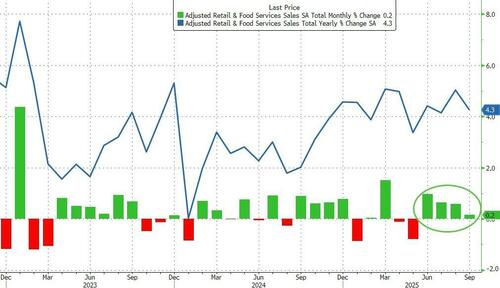
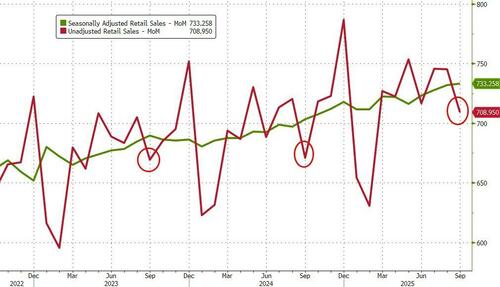
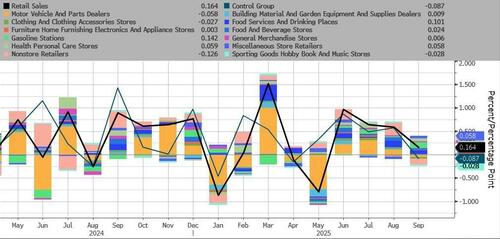
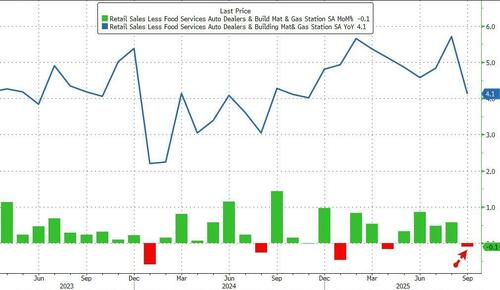
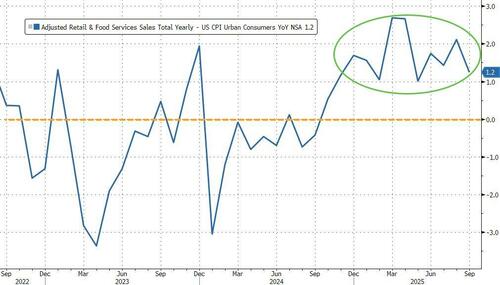
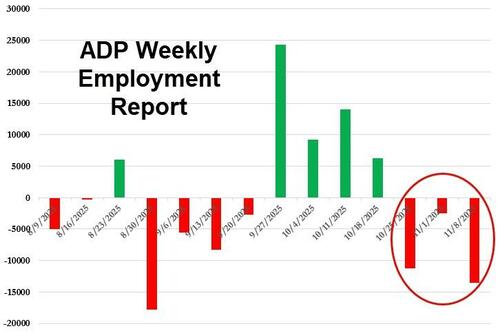
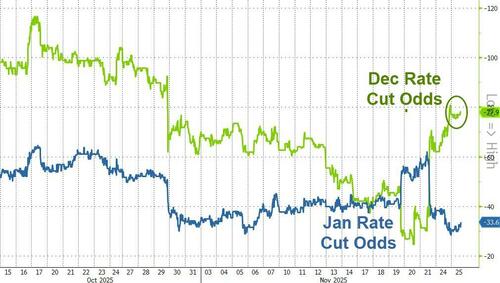
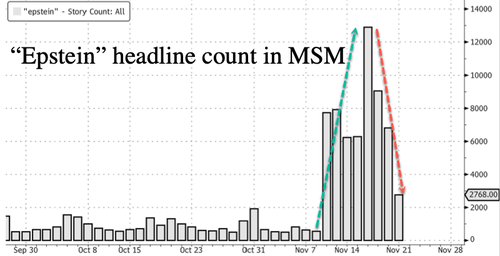
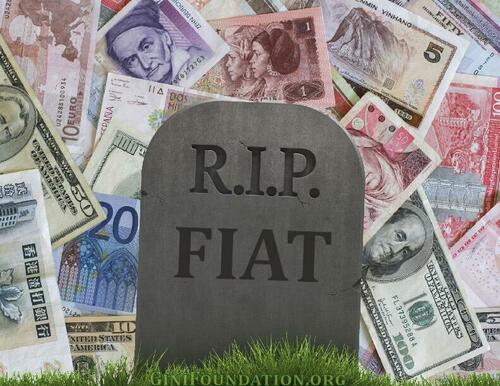

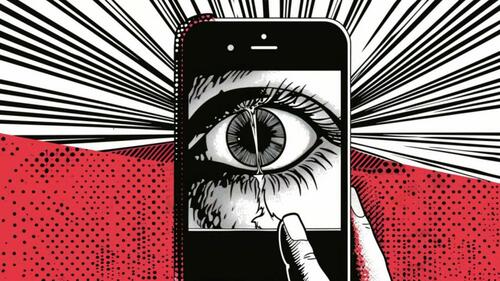
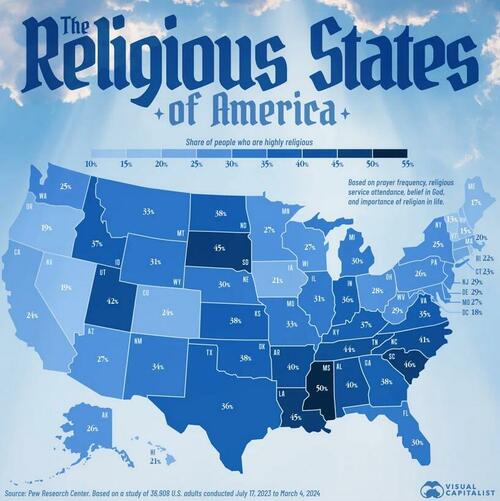


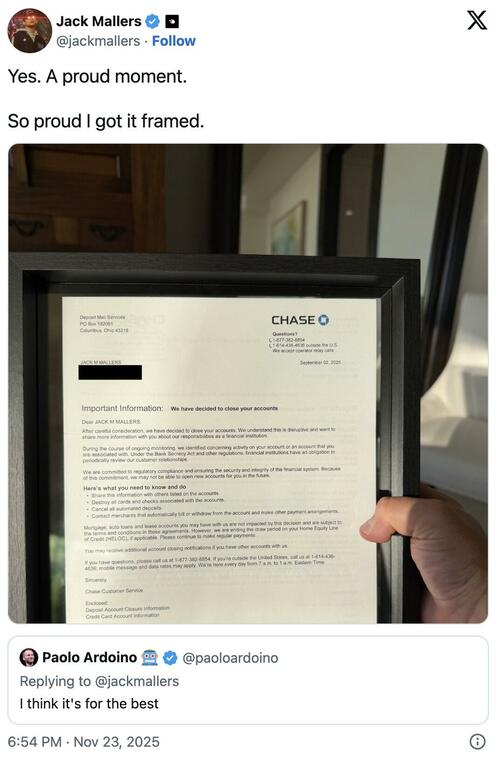
 An illustration of a mobile phone and laptop with the Google website, on Dec. 14, 2020. Laurie Dieffembacq/BELGA MAG/AFP via Getty Images
An illustration of a mobile phone and laptop with the Google website, on Dec. 14, 2020. Laurie Dieffembacq/BELGA MAG/AFP via Getty Images Illustration by The Epoch Times, Shutterstock
Illustration by The Epoch Times, Shutterstock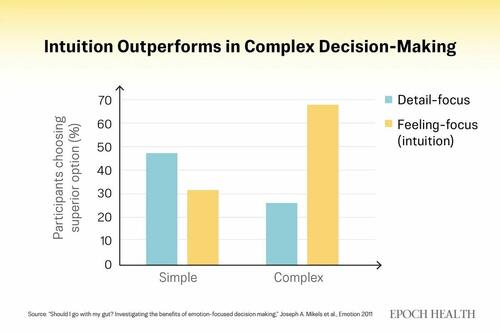 Illustration by The Epoch Times
Illustration by The Epoch Times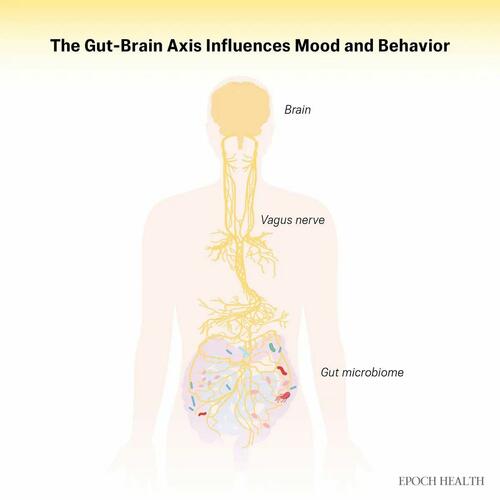 Illustration by The Epoch Times, Shutterstock
Illustration by The Epoch Times, Shutterstock Replicated results following Radin’s original experiment. Lower heart rate variability in response to disturbing images indicates a stronger fight-or-flight reaction. Illustration by The Epoch Times
Replicated results following Radin’s original experiment. Lower heart rate variability in response to disturbing images indicates a stronger fight-or-flight reaction. Illustration by The Epoch Times Getty Images
Getty Images

 Bolsonaro's damaged ankle monitor. Source: Federal District’s Secretariat for Penitentiary Administration
Bolsonaro's damaged ankle monitor. Source: Federal District’s Secretariat for Penitentiary Administration
 via AP
via AP
Recent comments